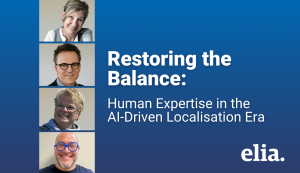“Diverse companies are better able to attract top talent, to improve their customer orientation, employee satisfaction and decision making.” McKinsey
Diversity and inclusion are often talked about by today’s businesses. Building a diverse workforce is important, but in order to get the most out of your employees your company must build a culture of inclusion. This means that your employees need to feel accepted, valued and respected, so that they can be who they are. Once this has been achieved you will find that your company will find it easier to attract top talent.
What is diversity and inclusion?
Workable’s definition of diversity refers to a group of people that includes ‘variation in personal, physical, and social characteristics, such as gender, ethnicity, age, and education.’
Global Diversity Practise refers to Inclusion as an organisational effort and practices in which different groups or individuals having different backgrounds are culturally and socially accepted and welcomed, and equally treated. These differences could be self-evident, such as national origin, age, race and ethnicity, religion/belief, gender, marital status and socioeconomic status or they could be more inherent, such as educational background, training, sector experience, organisational tenure, even personality, such as introverts and extroverts.
Ideally, a workplace should reflect the society in which it is based – whether you’re a large multinational that needs to reflect global diversity or a small organisation that needs to reflect your local environment.
What are some of the benefits of diversity and inclusion?
Diversity and Inclusion provides a competitive advantage
A report from McKinsey – “Diversity Wins How Inclusion matters” identified that companies who have a more diverse workforce are more likely to gain competitive advantage over their competitors which will ultimately result in more financial return.
“Diversity Employers in the top quartile for racial and ethnic diversity are 35 percent more likely to have financial returns above their respective national industry medians”. Mckinsey
It also pointed out that unequal performance of companies in the same industry and the same country indicates the differentiating factor towards more diverse companies.
Increased Profitability
”Different thinking from groups of employees coming from a diversity of backgrounds can reduce risks by 30% while improving innovation by 20%.” (Deloitte)
Diversity enhances creativity and encourages different perspectives which leads to better research, problem solving and decision making. This of course has a knock on effect to the success of your business and the bottom line. Fostering a diverse environment and learning from others can change the way that you think and act.
Innovation and Productivity
By looking at other opinions and perspectives you can deeply widen your viewpoint. Feeling included in the workplace allows individuals to be themselves which creates the perfect environment for creativity. This can translate into tangible objectives maximising productivity by producing a more creative and innovative environment.
Attract new employees and keep your best employees
It makes sense that recruiting from a large, diverse pool of candidates will increase your chances of finding the best person for the job. If your employees feel respected and valued from an inclusive work environment they are much less likely to leave. This can really help when as a business you are looking to reduce recruitment costs.
A diverse and inclusive workplace will impact the organisation culture without you even noticing. All members of staff will be interacting with employees from all different backgrounds, views, beliefs and life stages. This will positively affect the way that they interact and work with each other, allowing them to benefit from better awareness of others’ world views. A welcoming culture will increase engagement from all employees.
Customer experience is improved by a Diverse workforce
Teams with a high deviation from the “standard” perspective (in other words, cognitive diversity) are more likely to solve a problem than non-diverse teams, according to an experiment run by the Harvard Business Review.
As discussed previously a diverse and inclusive workforce means better expertise, talent, creativity and capabilities which in turn can lead to better customer service. It allows your organisation to fully understand the audience from different perspectives. This enables management to be able to properly fit employees with the tasks that they are best suited for. For example an employee with a fully creative mind would be better suited to a design role versus an employee who has an outgoing personality who would be more suited to a sales position. A happy employee results in happy customers.
So how does diversity specifically relate to the translation industry?
It is important to understand that not everyone in your Country speaks the same language. In order to create a diverse culture and relate to individuals we need to be able to provide communication that is understood by everyone. For example, in the UK statistics from The Standard identified that there are more than 270 nationalities and over 300 different languages of those who lived in London. Of course English is the most popular language across the world and typically used for business but we need to understand that translation is key to developing cultural, economic, social and business objectives across the world.
Diversity within the translation industry can also be used as a major tool when it comes to business negotiations and agreement translation. It can play a vital role as an intermediary between two or more individuals and help to make people feel more included and understood.
Many companies also use translation as a tool to translate workplace materials to make sure that all employees have the same information. An example of such could include a company’s policies and procedures, company objectives and safety measures. A workplace that offers this information in different languages really helps to create a diverse and inclusive workforce as it ensures that its employees are comfortable when receiving the information. It gives them the ability to express themselves in the language that they are most competent at speaking, making them feel more like their true selves.
To summarise, to achieve a fully diverse and inclusive workforce it is important to create the right environment in the workplace that allows your employees to truly be themselves. Only then will you be able to see the full potential of your employee. Making sure that materials are translated and that you communicate with your employees in their first language will assist you in creating the diverse and inclusive workforce that we all strive for.
References
https://www.mckinsey.com/business-functions/organization/our-insights/delivering-through-diversity#
https://www.standard.co.uk/hp/front/270-nationalities-and-300-different-languages-how-a-united-nations-of-workers-is-driving-london-forward-6572417.html
https://resources.workable.com/hr-terms/diversity-vs-inclusion
https://globaldiversitypractice.com/what-is-diversity-inclusion/
https://www.mckinsey.com/featured-insights/diversity-and-inclusion/diversity-wins-how-inclusion-matters
https://diversity.social/top-diversity-employers/deloitte/
https://hbr.org/2017/03/teams-solve-problems-faster-when-theyre-more-cognitively-diverse?zd_source=hrt&zd_campaign=5328&zd_term=chiradeepbasumallick
Sources
https://eriksen.com/global-business/diversity-inclusion-workplace-translation-strategies/
https://www.hult.edu/blog/benefits-challenges-cultural-diversity-workplace/
https://xtrf.eu/blog/how-localization-can-help-create-an-inclusive-workplace/
https://www.5starlanguages.co.uk/why-is-diversity-within-translation-important-in-the-uk-today/
https://diversity.social/diversity-inclusion-benefits/
Other resources
https://www.websiteplanet.com/blog/the-empowering-guide-for-women-in-tech/





